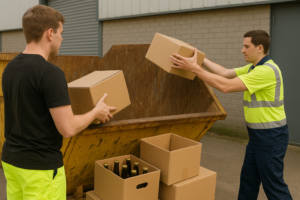What is ‘Operational Waste’?
When we talk about waste, you might immediately think about physical waste such as damaged, out of date or spoiled stock. But operational waste isn’t just about the type of waste you can see. It includes time, money, and resources that are lost through inefficiency. Examples of operational waste include:
- Manual processes that slow teams down
- Overstocking that results in having to reduce prices or write off stock
- Stockouts that disrupt sales
- Inefficient routing for deliveries
- Duplicate data entry and siloed systems
- Not having a ‘single source of truth’ resulting in queries and inconsistencies
- Poor demand forecasting leading to rushed or unnecessary purchasing
These issues are often accepted as coming with the territory of running a business, but if they’re not managed, they can have a real impact on your bottom line.
Spotting the Red Flags
If you’re not actively tracking these areas, you might not realise the scale of the problem. Some warning signs to look out for:
- Frequent last-minute orders to suppliers
- Drivers returning with undelivered stock
- Sales teams complaining about unavailable items
- High levels of write-offs or stock variances
- Data inconsistencies
- Teams spending time on manual or duplicate processes
- Too much time spent reconciling data between systems
- Customer complaints
- Unhappy employees
Any of these could be a symptom of a deeper operational issue that’s costing you more than you think.
The Cost of Carrying On
Unaddressed, operational waste doesn’t just drain your profitability, it restricts your ability to scale your business. A wholesaler who’s constantly firefighting doesn’t have the bandwidth to take a step back and think strategically. Plus, inefficiencies create frustration for employees and customers alike, affecting retention on both sides.
How to Start Making a Change
The first step is getting visibility of your issues. You can’t fix what you can’t see. That’s where purpose-built systems that have been developed with the drinks wholesale industry and all its nuances in mind make a real difference.
If you invest in systems that connect your data across sales, stock, and logistics, you can then use that data to highlight inefficiencies, whether that’s stock sat too long in the warehouse or delivery runs that could be better optimised.
Repeatable processes can be automated and forecasting tools can be based on real data from a single, reliable source of truth – rather than using gut feel and spreadsheets to make important business decisions.
Modern drinks wholesale operations don’t need to be held back by outdated systems or guesswork. With the right tools, identifying operational waste becomes part of your day-to-day management, not a once-a-year stocktake surprise or something that comes crawling out of the woodwork when you least expect it.
Turning Waste into Opportunity
The results of addressing operational waste can be far more than just cost-saving. It can help you unlock growth and free up your time and resource to think strategically about your business – ultimately improving the bottom line.
More efficient stock management frees up cash, smarter delivery routes improve service, better forecasting helps you negotiate with suppliers. And most importantly, you and your team spends more time working on tasks that grow the business, not fighting fires.
Hidden costs are only hidden until you start looking for them. Once you do, you’ll be surprised at how much room there is to improve and how quickly the benefits add up.
How Gaina Helps
Gaina’s suite of drinks wholesale software has been developed through many years’ experience working with best-in-class wholesalers and can help you become more efficient and take your business to the next level.
Find out more or get in touch today to learn how we can help.


Leave a Reply